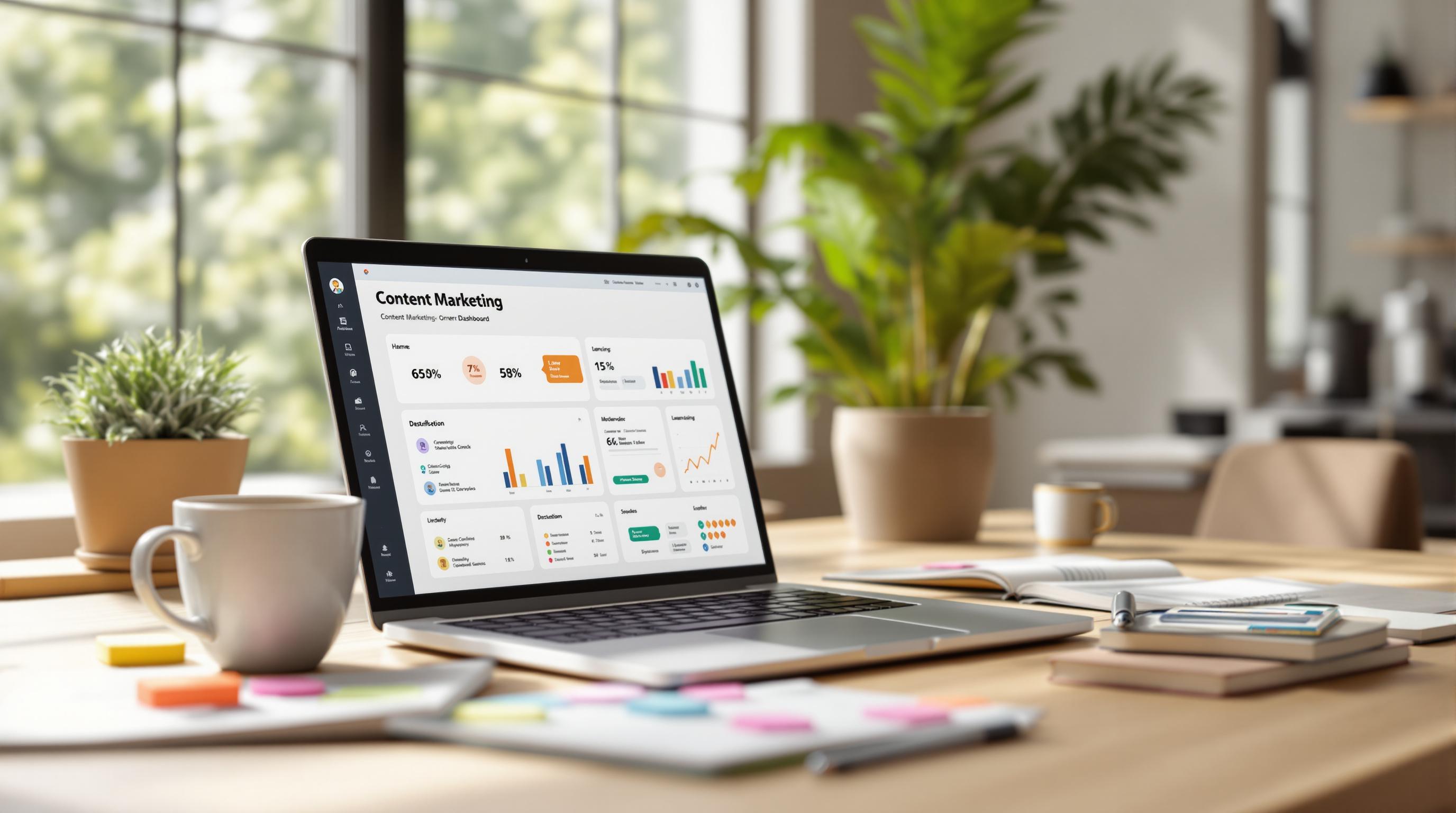Tracking and Analyzing Newsletter Performance

In the world of digital marketing, newsletters play a critical role in maintaining engagement with your audience, nurturing leads, and driving traffic to your site. For companies like Taleflow, which specialize in automated blog and newsletter services, it's crucial to understand how to evaluate the performance of these newsletters to optimize their effectiveness and ensure they achieve the desired goals. In this blog post, we will delve into the key metrics for assessing newsletter performance, the importance of tracking these metrics, and actionable strategies for improvement. Let's embark on this journey of mastering the art of newsletter performance tracking.
Understanding Newsletter Performance Metrics
To effectively gauge the success of your newsletter campaigns, you must familiarize yourself with several fundamental performance metrics. These metrics not only provide insights into how well your content is resonating with your audience but also guide your strategy for future campaigns. Here are the key metrics you need to consider:
- Open Rates: This metric reflects the percentage of recipients who open your email. It gives a preliminary indication of how successful your subject line is and how engaged your audience is.
- Click-Through Rates (CTR): CTR measures the percentage of email recipients who clicked on one or more links in your email. It's crucial for understanding whether your content and call-to-action (CTA) are compelling.
- Bounce Rates: Bounce rates tell you how many emails were undeliverable. A high bounce rate can indicate issues with your email list quality.
- Conversions: This metric is about measuring the number of recipients who completed a desired action, such as making a purchase or signing up for a webinar. It's the ultimate indicator of your email campaign’s effectiveness.
Understanding and analyzing these metrics can provide vital insights into your audience's preferences and behaviors, helping you craft more targeted and effective content. It's not just about numbers; it's about interpreting what these numbers mean for your overall marketing strategy.
The Importance of Tracking Newsletter Performance
Why should we stress so much on tracking newsletter performance? The answer lies in the multifaceted benefits that come with meticulous performance tracking.
- Improved Engagement: By analyzing metrics like open rates and CTR, you can identify what's working and what's not, allowing you to tweak your content for better engagement.
- Increased Conversions: Tracking conversions helps you understand which types of content and CTAs are driving the most desired actions. This enables you to refine your strategy to replicate these successes.
- Data-Driven Decisions: Performance tracking provides concrete data that can inform your decisions, making your strategies more effective and ensuring you're not flying blind.
Furthermore, tracking newsletter performance aligns directly with boosting SEO-optimized content and increasing website traffic. By continuously optimizing your newsletter content based on performance metrics, you ensure that your newsletters contribute to overall marketing goals, such as driving traffic to your website and improving your SEO rankings.
Effective Tools for Monitoring Newsletter Metrics
Leveraging the right tools can streamline the process of monitoring newsletter performance, making it easier to gather and analyze data. Here are some popular tools you might consider:
| Tool | Pros | Cons |
|---|---|---|
| Google Analytics | Free, extensive tracking options, integrates well with websites | Complex setup, steep learning curve |
| Mailchimp | User-friendly, robust reporting features, automation options | Can be costly for large email lists, limited customization at lower tiers |
| HubSpot | Comprehensive CRM integration, detailed analytics | Expensive, can be too complex for smaller businesses |
Each of these tools offers unique benefits and can be chosen based on your specific needs and existing systems. Whether you prefer a comprehensive CRM solution or a more straightforward email marketing tool, integrating these tools into your workflow can enhance your ability to track and optimize newsletter performance.
Setting Performance Benchmarks
Setting realistic performance benchmarks is essential for measuring the success of your newsletter campaigns. These benchmarks should be specific, measurable, attainable, relevant, and time-bound (SMART).
Industry Standards: Start by researching industry averages for your key metrics. This provides a baseline for what you can expect and helps you set realistic targets. For example, the average open rate for marketing emails is around 20-25%, while the average CTR is typically between 2-3%.
SMART Goals: Using industry standards, set specific benchmarks for your campaigns. For instance, instead of aiming to "increase open rates," aim to "increase open rates by 5% over the next three months."
Performance benchmarks provide clear targets and motivate your team to achieve them. They also facilitate a structured approach to monitoring and optimizing your campaigns.
Key Strategies for Improving Newsletter KPIs
Once you've set your benchmarks, it's time to implement strategies to achieve and exceed them. Here are some actionable tactics:
- A/B Testing: Experiment with different subject lines, email layouts, and CTAs to determine what resonates most with your audience.
- Refining Subject Lines: Craft compelling subject lines that capture attention and encourage opens. Personalization, urgency, and curiosity are effective elements.
- Optimizing Send Times: Analyze when your audience is most likely to open emails and schedule your sends accordingly.
- Personalizing Content: Tailor your content to address the specific needs and interests of your audience segments.
- Compelling CTAs: Use clear, engaging CTAs that encourage clicks and conversions.
Implementing these strategies can significantly boost your key performance indicators (KPIs), making your newsletters more effective and engaging without requiring excessive additional resources.
Case Studies: Successful Newsletter Campaigns
Let’s take a closer look at some successful newsletter campaigns to understand how strategic adjustments can yield impressive results.
Case Study 1: E-commerce Brand
An e-commerce company faced low open rates and conversions. They revamped their strategy by implementing the following changes:
- Introduced personalized subject lines
- Improved email design for mobile optimization
- Segmented their email list to target specific buyer personas
Outcome: These changes led to a 15% increase in open rates and a 10% boost in conversions within three months.
Case Study 2: SaaS Company
A SaaS company aiming to convert free trial users into paying customers used A/B testing to refine their email content and CTAs. They focused on:
- Testing different email formats and messaging
- Implementing dynamic content based on user behavior
- Optimizing email frequency and timing
Outcome: By fine-tuning their approach, the company saw a 20% increase in trial-to-paid conversions over six months.
These case studies highlight that with the right strategies, monitoring, and adjustments, significant improvements in newsletter performance are achievable. Taleflow’s automated solutions can similarly help streamline and enhance your content marketing efforts.
Integrating Newsletter Analytics with Overall Marketing Strategy
Newsletter analytics should not exist in a silo; they must be integrated into your broader marketing strategy to maximize their impact. Here’s how:
- Informing Content Creation: Use insights from your newsletter metrics to shape your content strategy. Topics that receive high engagement in newsletters can be expanded into blog posts or social media content.
- Social Media Strategy: High-performing newsletter content can also be shared across your social media channels to drive further engagement and reach.
- Overall Marketing Plans: Integrate newsletter analytics with your CRM to track customer journeys and tailor marketing efforts to different stages of the funnel.
Taleflow's content marketing automation services can simplify this process, providing you with a seamless integration of newsletter analytics into your overall marketing strategy.
Future Trends in Newsletter Performance Tracking
The landscape of newsletter performance tracking is continuously evolving, with emerging trends and technologies offering new opportunities. Here are some key trends to watch:
- AI and Machine Learning: Advanced algorithms can predict optimal send times, personalize content at scale, and provide deeper insights into subscriber behavior.
- Predictive Analytics: Using historical data to forecast future performance can help in planning and optimizing campaigns more effectively.
- Integration with Voice Assistants: As voice assistants become more prevalent, incorporating newsletter content into voice-searchable formats could be beneficial.
Staying ahead of these trends can provide significant competitive advantages, allowing you to continually refine and optimize your newsletter campaigns.
In conclusion, mastering newsletter performance tracking is essential for any company looking to effectively engage their audience and drive conversions. By understanding and leveraging key metrics, employing effective tools, setting benchmarks, and implementing proven strategies, you can significantly enhance your newsletter campaigns' success. Tools and services like those offered by Taleflow can streamline these processes, making content marketing automation more accessible and impactful. Embrace the future of newsletter performance tracking, and watch your marketing efforts yield impressive results.



